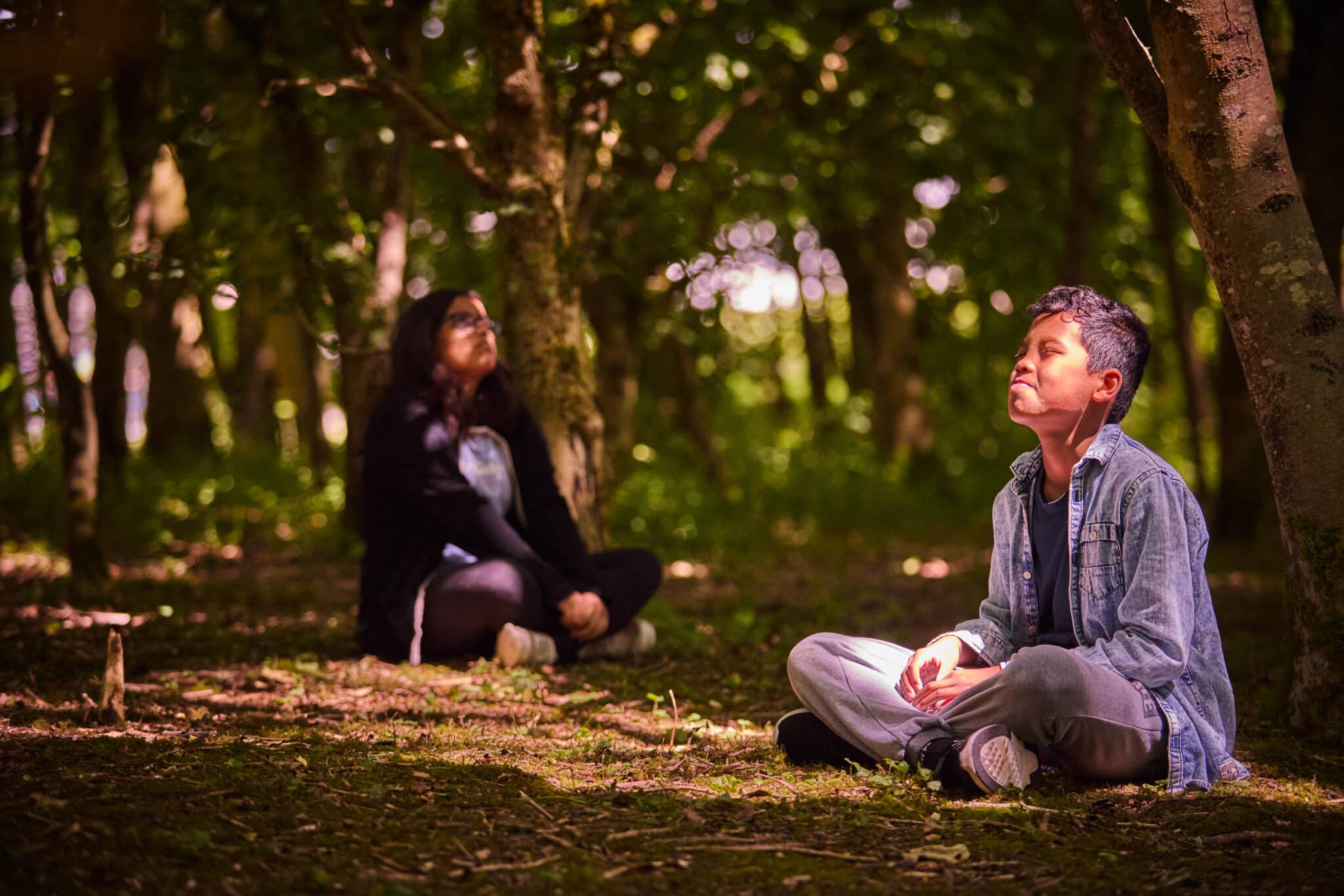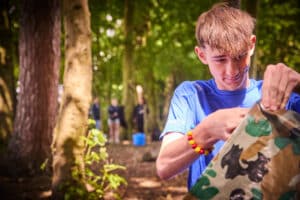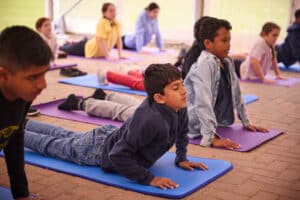Today, students are constantly juggling academic deadlines, social pressures, and an overwhelming stream of digital distractions, and finding moments of calm can feel nearly impossible. That’s where mindfulness comes in. Mindfulness is the practice of paying attention to the present moment with openness and without judgement. For students, this simple yet powerful technique can offer a range of benefits, from reducing anxiety and improving concentration to supporting emotional regulation and overall mental health.
As schools and universities increasingly recognise the value of wellbeing alongside academic achievement, mindfulness is becoming a key tool in helping students thrive, not just survive, their educational journey. But what does mindfulness involve, and how can students incorporate it into their daily lives?
Let’s explore exactly what mindfulness is, the benefits of mindfulness for students inside and outside the classroom, and offer some handy techniques to incorporate mindfulness activities into everyday life.
What is Mindfulness?

Mindfulness is the practice of focusing your attention on the present moment, with openness and without judgement. Rather than trying to block out thoughts or emotions, it encourages you to notice them, just as they are, without getting caught up in them.
Practising mindfulness can involve:
- Paying attention to your breath – noticing its rhythm and how it feels as you inhale and exhale
- Tuning into your senses – observing what you see, hear, smell, taste, or feel in a given moment
- Recognising thoughts and feelings – acknowledging them without labelling them as “good” or “bad”
- Letting go of distractions – gently bringing your focus back when your mind starts to wander
Imagine a student in a noisy classroom feeling overwhelmed by distractions and anxious thoughts. Instead of reacting or spiralling, they take a mindful pause. They close their eyes, breathe deeply, and simply notice what’s happening – acknowledging their anxiety, the surrounding noise, and the sensations in their body. In just a few moments, they feel calmer, more centred, and better able to focus on the lesson.
A 2022 study published in Frontiers in Psychology found that school-based mindfulness programmes can significantly reduce symptoms of anxiety, depression, and stress in students, while also improving attention and emotional regulation.
Why is Mindfulness important for students?
Research on the “Effects of Mindfulness on Psychological Health” has shown that mindfulness practices can have a profound impact on students’ lives, both academically and personally. Some of the benefits of mindfulness for students are:
- Stress Reduction: Students face numerous stressors, from exams and deadlines to social pressures and future uncertainties. Mindfulness provides tools to manage stress by helping students recognise and respond to stressful thoughts and emotions in a healthy way. By learning to observe their thoughts and feelings without judgement, students can develop a sense of calm and resilience in the face of challenges. Mindfulness paired with outdoor activities can help students deal with stress in a healthy way.
- Improved Focus and Concentration: In a world filled with distractions, maintaining focus can be a major struggle for students. Mindfulness helps train their attention, allowing students to concentrate better in class, while studying, and during exams. By learning to anchor their attention to the present moment, students can minimise distractions and improve their overall academic performance.
- Enhanced Emotional Regulation: Adolescence and young adulthood are periods of significant emotional development. Mindfulness can help students understand and manage their emotions more effectively. By becoming aware of their emotional states, students can learn to respond to challenging situations with greater composure and avoid impulsive reactions.
- Improved Sleep: Many students struggle with sleep due to stress, anxiety, and racing thoughts. Mindfulness practices, such as meditation, yoga and deep breathing exercises, can help calm their minds and promote restful sleep.
- Boosting Creativity: By encouraging a non-judgmental observation of thoughts and ideas, mindfulness can improve creativity and enable students to approach problem-solving with a fresh perspective.
How to bring mindfulness into the Classroom
The beauty of mindfulness is its accessibility. There are various ways to introduce mindfulness to students, making it an adaptable practice for all ages and learning styles. Simple breathing exercises can be easily incorporated into the classroom or practised at home. Guide students to focus on the feeling of their
breath entering and leaving their body, gently bringing their attention back to the breath whenever their mind wanders.
Body scan meditations are another valuable tool. In this practice, students systematically bring awareness to different parts of their body, noticing any sensations or tension. This helps develop body awareness and promotes relaxation. Even something as simple as walking can become a mindfulness practice. Encourage students to take mindful walks, paying attention to the sensations of their feet on the ground, the sounds around them, and the sights they encounter. This is a great way to bring mindfulness into everyday activities.
Our PGL THRIVE! Programme is all about boosting students’ health and wellbeing through meaningful outdoor experiences. By disconnecting from devices and engaging in activities like our “Wellness Wander” and personal growth games, students return rejuvenated and better equipped to thrive both in and out of the classroom.
5-minute mindfulness activities for children to incorporate into their everyday life
Mindfulness doesn’t need to be complicated or time-consuming. Even five minutes of focused attention can help children calm their minds, regulate their emotions, and become more aware of the present moment. These simple techniques are easy to introduce at home or in the classroom, and can be especially helpful during transitions, moments of overwhelm, or before starting a task.
Here are 7 easy, child-friendly mindfulness practices that take just five minutes:
1. Balloon Breathing
This is a great way to calm a busy mind. Ask your child to imagine they are blowing up a balloon in their belly. As they breathe in slowly through their nose, their tummy expands like a balloon. As they breathe out through their mouth, the balloon deflates. Encourage them to try this for 5–10 slow breaths. Children notice how their tummy moves as they breathe, which helps them to connect their bodies to their mind, which will allow their mind time to refocus and find a sense of calm.
When to use it: Before a test, during a meltdown, or as part of a bedtime routine.
2. 5-4-3-2-1 Senses Check-In
This grounding exercise helps children reconnect with their environment and feel more present. It’s especially useful when they feel anxious or overwhelmed.
Ask them to pause and notice:
- 5 things you can see – “I see the red pencil case, the window, my shoes, the teacher’s desk, and the clock.”
- 4 things you can feel – “I feel my jumper on my arms, the chair under my legs, my feet in my socks, and my hair on my neck.”
- 3 things you can hear – “I hear someone talking, the ticking clock, and a bird outside.”
- 2 things you can smell – “I smell my lunch and the hand soap I used.”
- 1 thing you can taste – “I can still taste the mint from my toothpaste.”
It gently brings their attention away from worries and back to the here and now. Scanning their environment and naming different sensations helps to slow down the mind, which signals safety and helps to calm the nervous system.
When to use it: After an argument, during a panic moment, or any time they need to feel more grounded.
3. Mindful Listening
Invite your child to sit quietly and close their eyes. Ask them to listen carefully to the sounds around them for one minute. This might include the hum of a radiator, birds chirping, distant voices, or even their own breathing.
Afterwards, ask: “What sounds did you notice that you hadn’t heard before?” This encourages focus and curiosity. You can also ask them how the sounds made them feel (whether that be calm, curious, or maybe even distracted). This helps children to build emotional awareness as well as attention skills.
When to use it: At the start of the day or before a group activity to bring calm and attention.
4. Body Scan
This gentle check-in helps children tune in to their physical sensations, promoting self-awareness and calm. It’s a key way to help children understand where they are holding tension or stress. Maybe that will be in their jaw, shoulders or even their feet – this exercise gives them the tools to release and relax any physical tension that comes with stress or anxiety.
Ask them to sit or lie down and slowly bring attention to each part of their body, from their toes up to their head. Guide them to notice how each area feels: “Are your feet warm or cool? Is your tummy tight or relaxed?”
They don’t need to do anything other than just notice.
When to use it: Before bed, during rest time, or when they say they feel “weird” or unsettled but can’t explain why.
5. Gratitude Pause
Take a mindful minute to reflect on three things they’re thankful for. These don’t have to be big or serious. Encourage them to choose things that made them smile or feel good that day. Writing down their gratitude or sharing with friends and family helps them to strengthen a positive attitude as well as strengthen connections with others.
Examples:
- “I’m grateful for the funny joke my friend told me.”
- “I’m thankful for my comfy bed.”
- “I liked the sunshine on my face at lunch.”
This simple exercise helps shift focus from stress or frustration to positivity.
When to use it: At bedtime, during family meals, or after a tough day.
6. Mindful Walking
Perfect for children who struggle to sit still, this moving meditation helps release restlessness while building awareness. Allowing your body to exert the tense energy it builds up when stressed allows children to re-centre their mind and break down that tense barrier they have built up.
Ask them to walk slowly in a safe space, indoors or outside, and focus on:
- How their feet feel on the ground
- The rhythm of their steps
- The sounds around them
- Their breathing as they move
Encourage them to pretend they’re a detective, noticing tiny details in their environment.
When to use it: Between lessons, during breaks, or on a walk home from school.
7. Cloud Watching (or Mindful Gazing)
This gentle practice encourages stillness and curiosity. Ask your child to sit quietly and watch the sky or observe something outside a window for a few minutes. If there are clouds, they can look for shapes or simply notice how they move. If indoors, they can focus on a flickering candle, a plant, or something interesting nearby. This helps children to build on their observation skills as well as learning to refocus their attention during stressful situations.
When to use it: As a calm-down tool after screen time or when they need a quiet activity.
Mindfulness works best when it becomes a regular part of a child’s routine. Even a few minutes a day can build emotional resilience, improve focus, and help children better manage stress or big emotions. Try choosing one technique to practise each day, or invite children to pick their favourite and use it whenever they need a mindful moment.
You can find more tips and tricks on introducing mindfulness through the NHS website or Calm
Book Mindful School Trips with PGL’s THRIVE! Programme
PGL Secondary School trips provide unique opportunities for students to engage in activities that naturally promote mindfulness.
Outdoor Activities: Our THRIVE! programme promotes mindfulness and helps to reduce stress by getting students to engage in outdoor adventures combined with reflective activities.By encouraging students to be present and connect with nature, THRIVE! promotes a sense of calm and resilience that supports their overall wellbeing!
Teamwork and Collaboration: The programme also encourages team-building activities and requires students to communicate effectively, listen attentively, and work together towards a common goal. These experiences can enhance social skills, empathy, and cooperation, all of which are related to mindfulness!
Overcoming Challenges: PGL adventure activities also involve facing challenges and getting students to step outside of their comfort zones. This can help students develop resilience, self-confidence, and a growth mindset, which are essential for navigating life’s challenges with greater ease and mindfulness.
If you would like to find out more about how our trips can help students develop mindfulness, contact us today!




